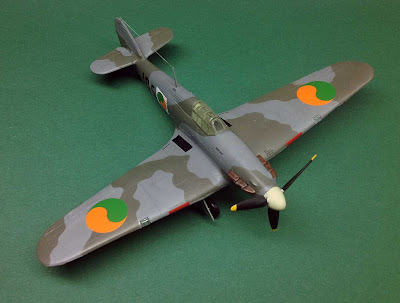After somewhat disappointing experience with Hurricane I, Airfix returns back to my favors with the new tooling of this classic twin-engined jack of all trades. At first glance, it looks to be an excellent model - considering the low price, detail of parts is excellent and panel lines are very crisp, although perhaps a bit too deep.
So far I have only finished the cockpit and put together the fuselage. Cockpit detail is, as expected, very rudimentary - floor, seats, partition wall between pilot and radio operator/rear gunner. Three rather oversized magazines for gunner's machine gun (one of which I managed to lose somewhere) provide a little detail for the floor. Instrument panel consists once again of a single decal. Very basic, but as can be seen in the pictures, not much of the interior will be seen once the fuselage is closed, so it's not much of a problem unless you choose to make it into one.
The fact that instrument panel plate doesn't fit into the fuselage is however a very real problem. Original form of that component makes it impossible to close the fuselage - there is at least 2mm gap. To rectify the problem, the instrument plate needs to be filed down a notch. In my case, it created another problem, because unaware of this needing to be done, I already put the instrument panel into place. Dry-fit and file this component before you stick the decal on to avoid this hassle.
Couple of words about the painting I've done so far. Pilot suits are my own interpretation, based on materials I have available. Airfix suggests that pilots wore bright blue-colored overalls, my own impression is that the crews also wore some sort of jacket on top of it. Pictures I found on the net and in my books suggest that black leather or dark tan-colored jackets similar to those worn by bomber boys were in favor among Me-110 crews, but don't take my word for it. My "historical research" is rudimentary at best and my usual approach when in doubt is 'if it's probable, it's good enough'.
Decals are of same fine quality as those in other new offerings
from Airfix. Complete set of stencil decals is included.
Three sprues of components out of the box.
Bomb armament and external fuel tanks won't be used by me
in this project, but they're a nice addition to my spare part box.
Putting together the fuselage turned out to be
a bit of a hassle due to over-sized instrument panel plate.
If you're in a mood for a quick trip over the Channel, this cockpit
provides a lot of room for a picnic box and a couple of bottles of wine.











